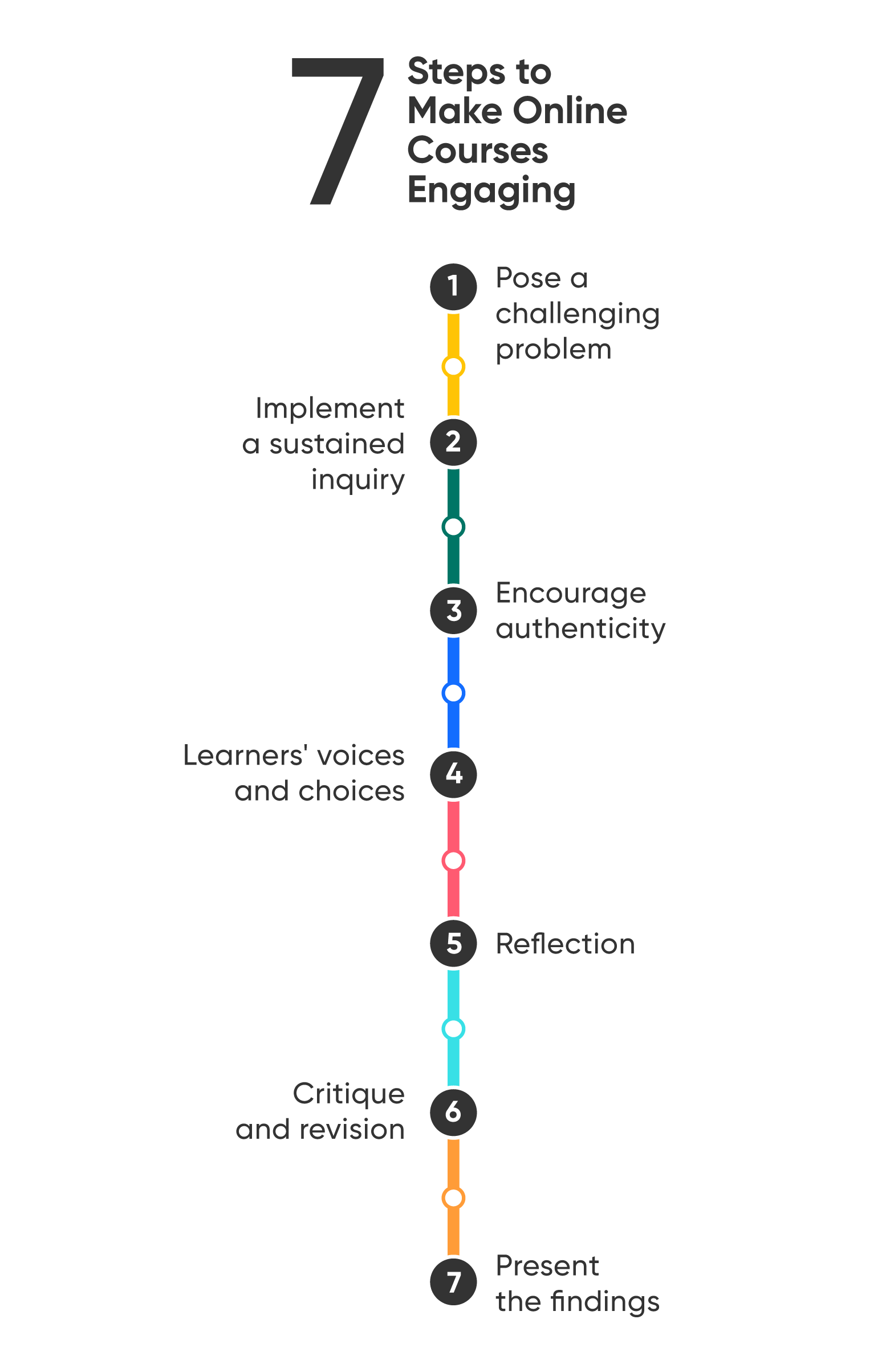
5 min reading time
What is Project-Based Learning? A Guide for Corporate Trainers
When your training your learners, the ultimate aim is to provide them with the ability to tackle real-world challenges. And that’s what Project-Based Learning does.
Taking a Project-Based Learning approach to corporate training has advantages for both learners and trainers alike. Let’s run through what it is and how it can be utilized in a training environment.
What is Project-Based Learning?
Project-Based Learning or PBL is learning while doing. It gives learners the opportunity to gain a deeper understanding of a topic through problem-solving using real-world examples and challenges.
The big difference between PBL and other types of projects is that it is used to train an entire unit, as opposed to just one part of it. It’s an example of Constructivist Learning Theory put into practice. Unlike other training strategies where a trainer lectures learners on a topic, with Project-Based Learning you take on the role of coach or guide, while your trainees direct their own learning.
Project-based learning ideas for your training
There are seven steps to a successful project that you should keep in mind:

1. Pose a challenging problem
Your role as instructor is crucial to this first step. You can set learners up for success by framing the problem carefully. You should provide learners by posing a ‘driving question’, an open question that encourages inquiry.
2. Implement a sustained enquiry
Give the project teams the opportunity to research solutions to the problem. This could include online research, case studies, competitor analysis, and interviews with your organization’s leadership team. Or if you’re using a LMS to train, then you could encourage them to comment and interact with co-workers or instructors via the forum or provide them with a collection of resources that are stored in your LMS.
3. Encourage authenticity
Authenticity in this context means applying the driving question to real-world problems i.e. how does this problem impact my workplace on a day to day basis?
4. Learners’ voices and choices
This step is about giving project teams as much freedom as is feasible. The more guidelines you give, the less your learners have to think about. Give your project teams as much opportunity to define the process, content and final product as possible.
5. Reflection
Learners and instructors take the opportunity to reflect on what has come up during the course of the project, including obstacles and strategies for overcoming them. They can discuss it face-to-face or via the LMS through a forum, course reviews, etc.
6. Critique and revision
Feedback is critical to Project-Based Learning. Teams should be guided by you, and you can offer your thoughts on the direction they are going in in relation to what you want them to learn from the project. Teams can also offer each other feedback, online through your LMS or in person. This should be followed by a period of revision, where amendments and improvements are made based on the feedback.
7. Present the findings
Each project team should be given the opportunity to present their findings. In some cases, project teams might come up with a workable solution to a real problem the company is facing that might be worth taking forward. If you believe this is the case, consider inviting someone from the management team to see your learners’ presentations.
Benefits of Project-Based Learning
When learners have a hand in their own training, it can often seem more meaningful to them. We explored this concept in a recent post on Cognitive Learning Theory, which sees learners as active agents. This means they’re more engaged and recall it with greater ease.
PBL encourages both learner autonomy and collaboration, and places a lot of emphasis on developing soft skills. Project-Based Learning is usually a collaborative process, which allows your teams to practice their communication skills and to learn to work together.
Since the project usually concludes with a presentation of their findings, learners also get to practice designing and delivering presentations, and public speaking skills. These are fundamental transferable skills that will assist them in all aspects of their work.
Importantly, Project-Based Learning can be done in-person, online, or a combination of the two if you have an LMS. Employees can meet in person or talk through an LMS forum. They can present face-fo-face or upload a recording. They can get feedback in the office or getting instructor feedback on uploaded research. It’s great for larger or remote teams as your organization can encourage collaborative learning no matter where your employees are.
There are benefits for your organization too. You’re posing real-life challenges and asking for real solutions; your learners are likely to come up with creative, ambitious answers to the questions you pose.
Project-Based Learning Examples
Great examples of Project-Based Learning identify a real challenge the company faces and gets the team brainstorming on it. Here are some examples:
1. A HR team project
Example: “How can we take advantage of the opportunities remote working brings, without losing out on the opportunities our employees have to collaborate?”
Employees would then research the benefits of working from home compared with the benefits of working in the office, look at best practice, consider what the company’s needs are, and come up with solutions. They would then present their findings along with a new suggested remote-working policy.
2. A Marketing team project
Example: “How can we leverage the power of social media, while mitigating the risks it exposes our company to?”
Teams would consider what the best social media channels for the organization are, research the benefits and risks to the business, carry out a SWOT analysis and propose ideas.
3. A Leadership team project
Example: “How can our organization maximize our profits by taking advantage of the developments in robotics and AI?”
This project would allow senior managers to explore how new technology could impact their organization and their workforce in years to come.
The teams would conduct specific research into how AI and robotics might impact their industry, how that might affect their workforce, the probability of job losses, and the potential impact on the bottom line. This could have a dramatic effect on the company’s direction in the following years.
Challenges of Project-Based Learning
Project-Based Learning can be time-consuming, and as an instructor you may need to spend more time guiding learners through the process than you would delivering materials in a more traditional setting.
This type of learning is generally better suited to some personalities than others, and part of your role will be to ensure everyone gets a voice and stays involved in the process. While PBL is intended to teach a concept completely, you may feel like you need to blend it with other instructional styles to ensure a concept is fully understood by all learners.
What types of training do you find are best delivered through Project-Based Learning? What projects have driven successful results for your company? Let us know in the comments.



